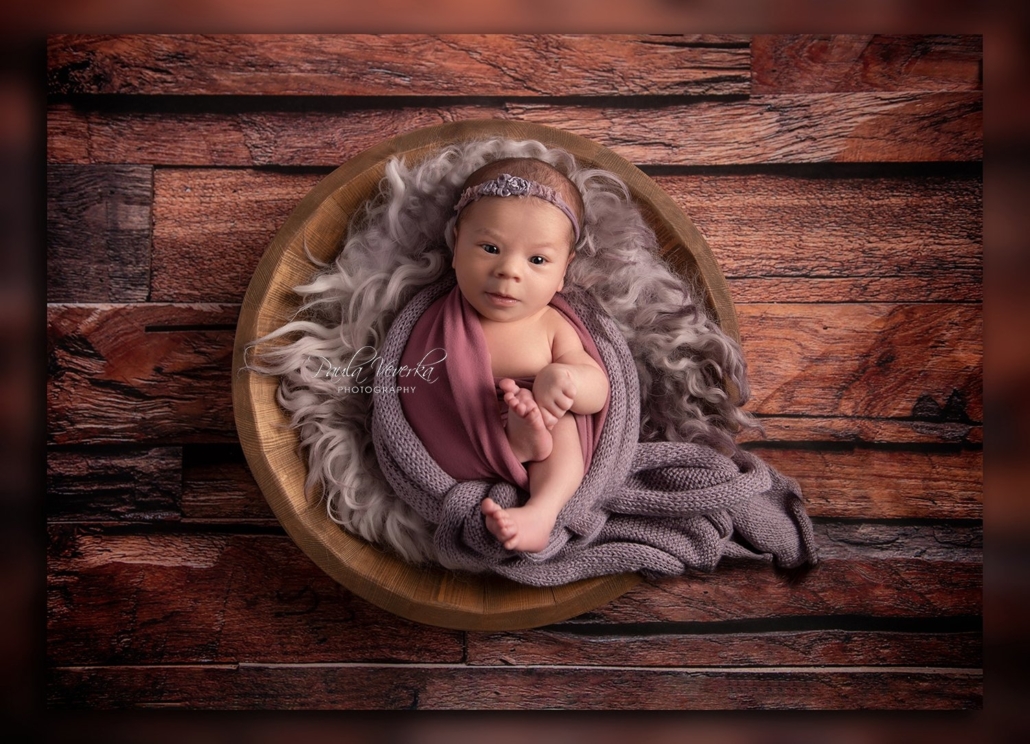Welcome to the wonderful, whirlwind world of new parenthood!
If you’re reading this, chances are you’re either cradling a precious newborn or eagerly awaiting your little one’s arrival. Amidst the sleepless nights and endless nappy changes, you might be wondering about newborn photography. Is it worth it? What are the benefits?
As a professional newborn photographer in Glasgow and I’m here to guide you through your baby’s first photoshoot.
The Fleeting Nature of Newborn Days
You’ll probably hear this a million time by the time baby arrives, but… newborn don’t stay tiny for long. One minute, they’re tiny bundles curled up just like they were in the womb, and the next, they’re stretching out, losing that newborn look faster than you can say “growth spurt”.
This rapid change is precisely why the benefits of newborn photography are so big: we’re not just taking pictures; we’re freezing time, capturing fleeting moments that you’ll treasure for a lifetime.
I remember when my own daughter was born. In the blur of those early days, I wished I could press pause, to soak in every detail tiny deatil and moment. That’s the gift I strive to give every family I work with in my newborn portrait studio. It’s about preserving those delicate eyelashes, those wrinkly little feet, that button nose – details that change so quickly but that you’ll want to remember forever.
The Art of Newborn Photography
Now, you might be thinking, “I’ve got a good camera on my phone. Can’t I just do this myself?”
It’s a fair question, and yes, you should absolutely take lots of everyday snaps of your baby. But here’s where the benefits of professional newborn photography really shine through.
Newborn photography is both an art and a science. It requires not just an eye for composition and lighting, but also specialised knowledge about newborn safety, soothing techniques, and how to pose these delicate babies. In my years as a newborn photographer, I’ve honed these skills to create a safe, comfortable environment where both baby and parents can relax.
In my studio, every aspect is designed with your newborn’s comfort and safety in mind. The room is kept warm and cosy, with soft blankets and carefully selected props that are not only beautiful but also completely safe for your little one. This attention to detail is one of the key benefits of newborn photography with a professional – you can relax, knowing your precious baby is in experienced, caring hands.
Certainly. I’ll revise the content to use British English spelling and phrasing. Here’s the amended version:
Safety First: A Top Priority
When it comes to newborn photography benefits, safety is paramount. As a professional newborn photographer, I’ve undergone extensive training in newborn handling and posing. Those adorable images you see of babies in perfect poses? They’re often composites, created with the utmost care for your little one’s comfort and wellbeing.
In my studio, every prop, every wrap, every accessory is chosen not just for its look, but for its safety. I’m constantly updating my knowledge on the latest safety practices in newborn photography, so you know your precious bundle is in safe hands.
The Benefits of Newborn Photography: High-Quality Images
One of the most tangible newborn photography benefits is the quality of images you receive.
Professional-grade cameras, lenses, and lighting equipment allow me to capture details that mobile phone cameras simply can’t match. The soft fuzz on your baby’s shoulders, the tiny creases in their knuckles, the perfect bow of their lips – these delicate features deserve to be preserved in stunning clarity.
But it’s not just about the equipment. Years of experience have taught me how to use light to flatter your baby’s delicate features, how to pose them to showcase their uniqueness, and how to capture those fleeting newborn expressions. After the session, I spend hours carefully editing each image, ensuring every photograph is a work of art you’ll be proud to display in your home.
A Stress-Free Experience for New Parents
Let’s face it: those early weeks of parenthood can be overwhelming.
That’s why I’ve designed my newborn photo sessions to be as stress-free as possible for you. This peace of mind is one of the often-overlooked benefits of newborn photography with a professional.
You don’t need to worry about a thing. Just bring your baby, and I’ll take care of the rest. My studio is stocked with everything we might need, from wraps and headbands to props and backgrounds. I work at your baby’s pace, allowing plenty of time for feeding, soothing, and cuddling. This session isn’t just about getting great photos – it’s a chance for you to step back, relax, and simply enjoy this precious time with your little one.

Starting Your Newborn Photography Journey
If you’re considering newborn photography, it’s important to book early. Ideally, you should contact me while you’re still pregnant. This allows us to pencil in a date around your due date, ensuring we can capture your little one during that perfect newborn stage, typically within the first two weeks of life.
But don’t worry if your baby has already arrived – it’s never too late to capture beautiful images of your little one. While the sleepy, curled-up poses are easiest to achieve in the first couple of weeks, older babies offer their own charm with more alert expressions and emerging personalities.
Preserving Precious Moments
The newborn stage is magical, but it passes in the blink of an eye. Professional newborn photography allows you to freeze time, capturing every perfect detail of your little one.
As your newborn photographer, I’m here to help you preserve memories, to create art from your family’s love, and to give you tangible reminders of this incredible time in your life.
Want to know more? Get in touch






